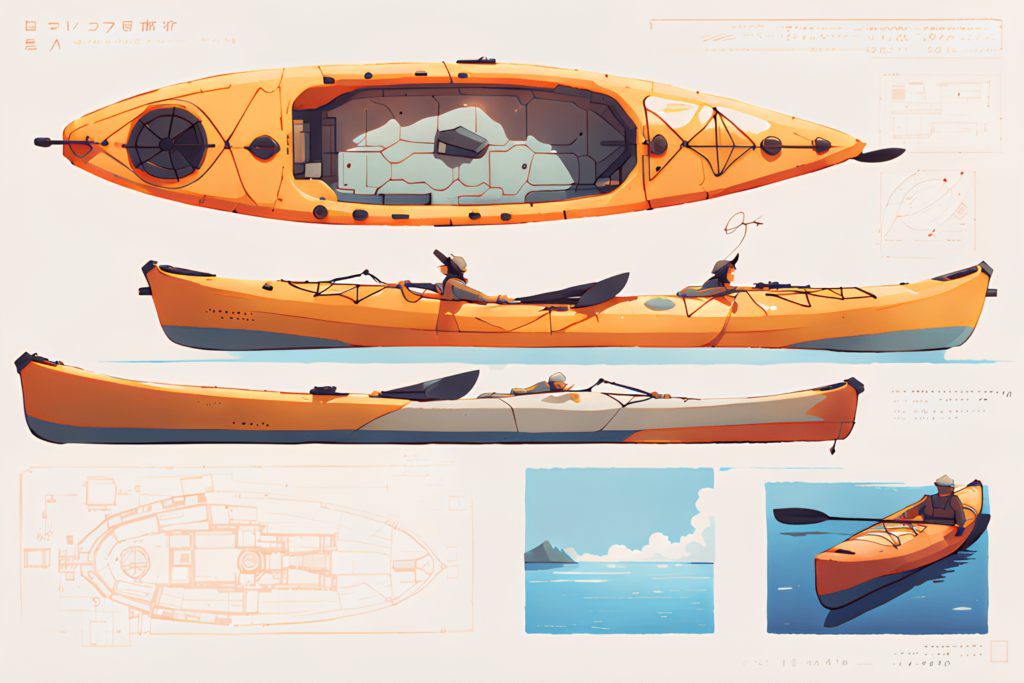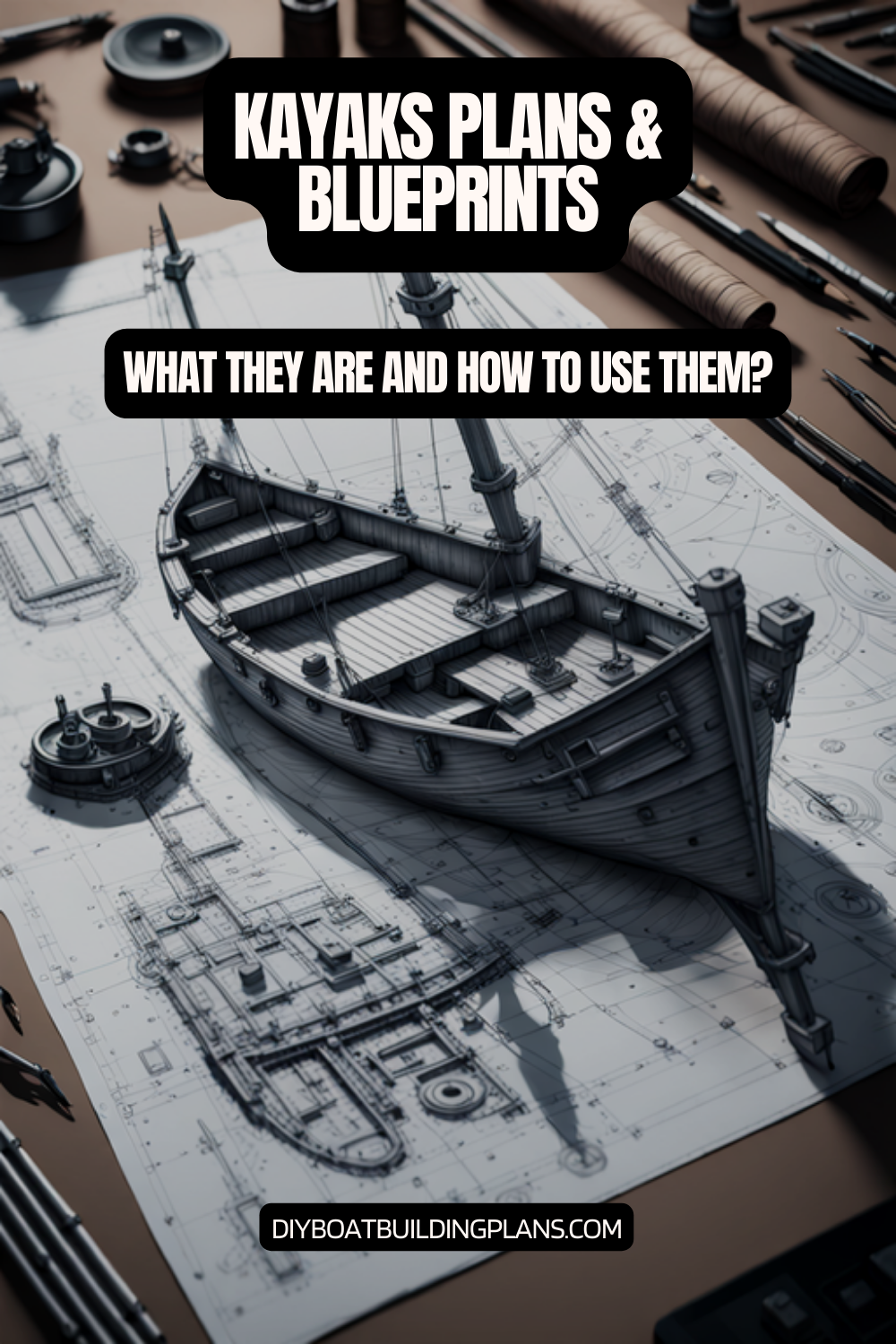Overview of Kayak Plans & Blueprints
Kayak plans and blueprints are essential tools for anyone interested in building their own kayak. These plans provide detailed instructions and measurements for constructing a kayak from scratch. They serve as a roadmap, guiding builders through each step of the process. Having a plan before starting the construction of a kayak is crucial as it ensures that all the necessary components are accounted for and that the final product will be structurally sound.
Key Takeaways
- Building your own kayak has many benefits, including customization and cost savings.
- There are various types of kayak plans and blueprints available, so choose one that matches your skill level.
- Materials needed for building a kayak include wood, fiberglass, and epoxy.
- Tools required for building a kayak include saws, sanders, and clamps.
- To avoid common mistakes, follow a step-by-step guide and take your time during the building process.

Benefits of Building Your Own Kayak
One of the primary benefits of building your own kayak is the cost savings compared to buying a pre-made one. Purchasing a brand new kayak can be quite expensive, especially if you’re looking for a high-quality model. By building your own kayak, you can save a significant amount of money while still enjoying the same level of functionality and performance.
Another advantage of building your own kayak is the customization options it offers. When buying a pre-made kayak, you are limited to the designs and features available on the market. However, with a DIY project, you have the freedom to tailor every aspect of your kayak to fit your personal preferences. From the shape and size to the color and accessories, you have complete control over the final product.
Building your own kayak also provides a sense of accomplishment and pride. There’s something incredibly satisfying about creating something with your own hands, especially when it turns out to be a functional and beautiful watercraft. The process of building a kayak requires patience, attention to detail, and problem-solving skills. Seeing your hard work come together into a finished product is an incredibly rewarding experience.
Types of Kayak Plans & Blueprints Available
When it comes to kayak plans and blueprints, there are various options available to suit different needs and skill levels. One consideration is whether to choose free or paid plans. Free plans can be found online and are often basic in nature, providing a general outline of the construction process. On the other hand, paid plans typically offer more detailed instructions, precise measurements, and additional support from the designer.
Another factor to consider is the type of kayak you want to build. There are different styles of kayaks, including recreational kayaks, touring kayaks, and fishing kayaks, each designed for specific purposes. The plans and blueprints available will vary depending on the style you choose.
Additionally, plans are often categorized based on skill levels. Beginner plans are ideal for those who have little to no experience in woodworking or boat building. Intermediate plans are suitable for individuals with some prior experience and a basic understanding of construction techniques. Advanced plans are intended for experienced builders who are comfortable with complex projects and advanced techniques.
Choosing the Right Kayak Plan for Your Skill Level
| Plan Type | Skill Level | Length | Width | Weight Capacity |
|---|---|---|---|---|
| Recreational | Beginner | 9-12 feet | 28-32 inches | 250-350 pounds |
| Touring | Intermediate | 12-16 feet | 22-26 inches | 300-450 pounds |
| Whitewater | Advanced | 7-10 feet | 24-28 inches | 200-300 pounds |
Selecting a kayak plan that matches your skill level is crucial to ensure a successful build. It’s important to be realistic about your abilities and choose a plan that you feel confident in executing. Building a kayak requires time, patience, and attention to detail, so it’s essential to select a plan that aligns with your skill set.
When choosing a plan, consider factors such as the time commitment required and your budget. Some plans may require more time and effort than others, so it’s important to assess whether you have the necessary resources available. Additionally, take into account your budget for materials and tools. Some plans may require specialized equipment or expensive materials, which could impact your overall cost.
It’s also beneficial to read reviews or seek recommendations from other builders who have used the same plan. Their experiences can provide valuable insights into the difficulty level and potential challenges associated with a particular plan.
Materials Needed for Building a Kayak
Building a kayak requires specific materials to ensure its durability and performance on the water. The list of materials needed may vary depending on the design and style of the kayak, but there are some common components that are essential for any build.
The primary material used for constructing the hull of a kayak is typically marine-grade plywood. This type of plywood is specifically designed to withstand exposure to water and has excellent strength and durability properties. Other materials required include epoxy resin, fiberglass cloth, and various types of hardware such as screws, bolts, and fasteners.
It’s important to choose high-quality materials to ensure the longevity of your kayak. Investing in premium materials may increase the initial cost, but it will result in a more robust and reliable watercraft.
Tools Required for Building a Kayak
In addition to the materials, there are several tools necessary for building a kayak. These tools help shape and assemble the various components of the kayak. While the specific tools required may vary depending on the plan and design, there are some essential tools that every builder should have.
A circular saw or jigsaw is essential for cutting the plywood into the desired shapes. A power drill is necessary for drilling holes and attaching hardware. Clamps are useful for holding pieces together during assembly, while sandpaper and a sander are needed for smoothing and shaping the wood surfaces.
Other tools that may be required include a router for creating beveled edges, a chisel for fine-tuning joints, and a measuring tape for precise measurements. It’s important to have a well-equipped workshop with these tools readily available to ensure a smooth building process.
Step-by-Step Guide to Building a Kayak Using Plans & Blueprints
Building a kayak using plans and blueprints involves several steps that need to be followed carefully. While each plan may have its own specific instructions, the general process remains relatively consistent.
1. Study the plans: Begin by thoroughly studying the plans and familiarizing yourself with the instructions and measurements. Understand each step before proceeding to ensure accuracy throughout the build.
2. Prepare the materials: Gather all the necessary materials and ensure they are in good condition. Cut the plywood according to the dimensions specified in the plans.
3. Assemble the hull: Start by assembling the hull of the kayak. This involves joining the plywood panels together using epoxy resin and fiberglass cloth. Follow the instructions provided in the plans for the specific assembly method.
4. Shape and sand: Once the hull is assembled, use a saw or router to shape the kayak’s profile. Smooth out any rough edges or imperfections using sandpaper or a sander.
5. Install hardware: Attach the necessary hardware, such as handles, hatches, and deck lines, according to the instructions provided in the plans.
6. Apply finish: Apply a protective finish to the kayak to enhance its appearance and protect it from water damage. This can be done using marine-grade varnish or paint.
7. Test and adjust: Before taking your kayak out on the water, it’s important to test it in a controlled environment such as a pool or calm lake. Make any necessary adjustments to ensure proper buoyancy and stability.
Tips for Customizing Your Kayak Design
One of the advantages of building your own kayak is the ability to customize its design according to your preferences. Here are some tips for personalizing your kayak:
1. Color and aesthetics: Choose a color scheme that reflects your personality or matches your other outdoor gear. Consider adding decals or artwork to make your kayak truly unique.
2. Accessories and features: Customize your kayak with accessories such as rod holders, storage compartments, or a rudder system. These additions can enhance functionality and make your kayaking experience more enjoyable.
3. Seat and padding: Experiment with different seat options and padding materials to find the most comfortable setup for long hours on the water.
4. Deck rigging: Add deck rigging, such as bungee cords or netting, to secure gear and equipment during your kayaking adventures.
Remember to consider the impact of any customizations on the overall weight and balance of the kayak. It’s important to maintain the kayak’s stability and performance while adding personal touches.
Common Mistakes to Avoid When Building a Kayak
While building a kayak can be a rewarding experience, it’s not without its challenges. Here are some common mistakes to avoid:
1. Rushing the process: Take your time and follow the instructions carefully. Rushing can lead to errors and compromise the structural integrity of the kayak.
2. Neglecting proper measurements: Accurate measurements are crucial for a successful build. Double-check all measurements before cutting or assembling any components.
3. Using low-quality materials: Investing in high-quality materials is essential for a durable and long-lasting kayak. Cutting corners on materials may result in a weaker and less reliable watercraft.
4. Overcomplicating the design: While customization is encouraged, avoid overcomplicating the design with unnecessary features or complex modifications. Keep in mind that simplicity often leads to better performance and ease of use.
5. Lack of proper sealing: Ensure that all joints, seams, and edges are properly sealed with epoxy resin or marine-grade sealant. This prevents water from seeping into the wood and causing damage over time.
Download over 500 Boat Plans. Click on the link below.
-->Click Here<--
Maintenance and Care of Your Homemade Kayak
Proper maintenance and care are essential for extending the lifespan of your homemade kayak. Here are some tips to keep your kayak in optimal condition:
1. Rinse after each use: Rinse your kayak with fresh water after each outing to remove any saltwater or debris that may have accumulated.
2. Store properly: Store your kayak in a cool, dry place away from direct sunlight when not in use. Avoid storing it on hard surfaces that could cause damage.
3. Regular inspections: Periodically inspect your kayak for any signs of wear or damage, such as cracks, dents, or loose hardware. Address any issues promptly to prevent further damage.
4. Reapply finish: Over time, the protective finish on your kayak may wear off. Reapply a fresh coat of marine-grade varnish or paint to maintain its appearance and protect the wood.
5. Avoid extreme temperatures: Avoid exposing your kayak to extreme temperatures, as this can cause the wood to expand or contract, leading to structural issues.
By following these maintenance tips, you can ensure that your homemade kayak remains in excellent condition for years to come.

Conclusion – Kayak Plans & Blueprints
Building your own kayak using plans and blueprints offers numerous benefits, including cost savings, customization options, and a sense of accomplishment. With the right plan and materials, anyone can embark on this rewarding DIY project. By carefully selecting a plan that matches your skill level and following the step-by-step instructions, you can create a unique and functional watercraft tailored to your preferences. Remember to avoid common mistakes and properly maintain your kayak to enjoy many memorable adventures on the water. So why not give it a try and experience the joy of building your own kayak?
FAQs – Kayak Plans & Blueprints
What are kayak plans and blueprints?
Kayak plans and blueprints are detailed instructions and diagrams that guide individuals in building their own kayaks. They include information on the materials needed, measurements, and step-by-step instructions.
Why would someone want to build their own kayak?
Building your own kayak can be a rewarding experience and can save you money compared to buying a pre-made kayak. It also allows for customization and the ability to create a kayak that fits your specific needs and preferences.
What materials are typically needed to build a kayak?
Materials needed to build a kayak can vary depending on the design and type of kayak being built. However, common materials include wood, fiberglass, epoxy, and marine-grade plywood.
Do I need to have experience in woodworking to build a kayak?
While experience in woodworking can be helpful, it is not necessary to build a kayak. Many kayak plans and blueprints are designed for beginners and include detailed instructions to guide individuals through the process.
How long does it typically take to build a kayak?
The time it takes to build a kayak can vary depending on the design and the individual’s experience level. However, it can take anywhere from a few weeks to several months to complete a kayak.
Can I modify the kayak plans and blueprints to fit my specific needs?
Yes, kayak plans and blueprints can be modified to fit an individual’s specific needs and preferences. However, it is important to ensure that any modifications made do not compromise the safety or integrity of the kayak.



